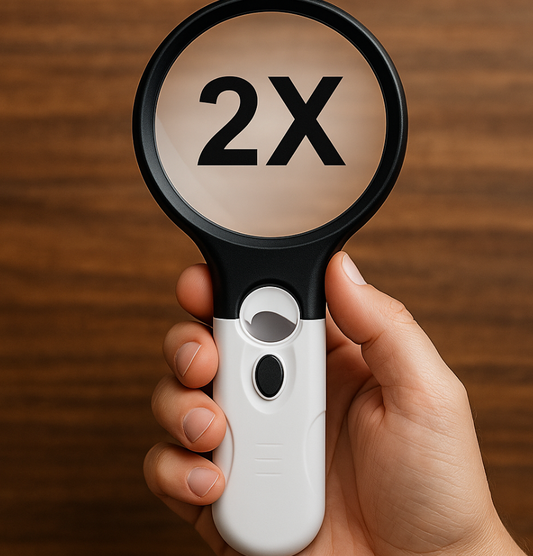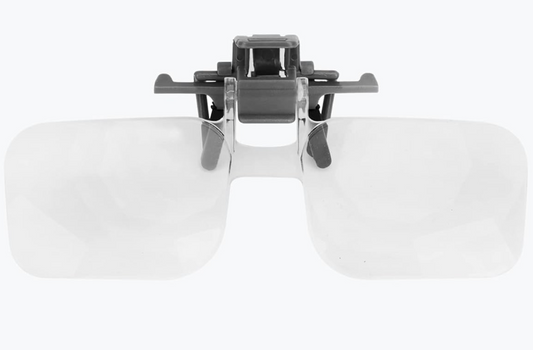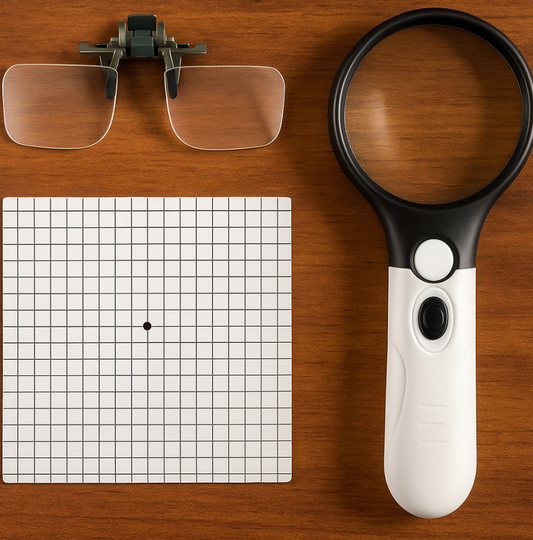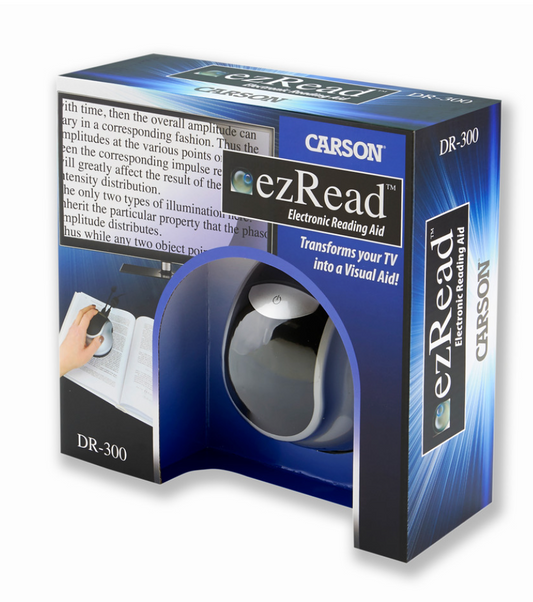Travel Tips and Tools for People with Low Vision
Share
Travel Tips and Tools for People with Low Vision
Traveling can be a rewarding and enriching experience for anyone, including those living with low vision. Whether you’re visiting a new city or exploring a favourite destination, having the right tools and strategies can help you stay independent and confident throughout your journey. In this blog post, we’ll explore practical travel tips and highlight essential tools.
Preparing for Your Trip
Research Your Destination
Before setting off, take time to research your destination. Look for information about:
- Accessible Accommodations: Many hotels and vacation rentals offer accessibility features, such as large-print guides or staff assistance. Ask for rooms that have larger, obstacle free spaces and accessible washroom facilities.
- Transportation Options: Check for accessible public transit, ride-share services, or rental cars equipped with navigation aids. Read up prior to arriving - this will lead to less anxiety and stress when you are on your vacation.
- Local Resources: Search for vision support organizations or services in your destination city in case you need additional assistance. Local libraries are a great place to start.
Plan Your Itinerary
Create a detailed itinerary to minimize stress while traveling. Consider these tips:
- Use apps like Google Maps or specialized low-vision navigation tools to mark key locations.
- Try Chat GPT for some tips and itinerary ideas.
- Opt for guided tours that cater to people with low vision.
- Schedule breaks throughout the day to rest and recharge.
Pack Strategically
Packing the right items can make a huge difference. Here’s a checklist of essentials for travelers with low vision:
- Pocket-sized LED magnifiers
- Small clip-on magnifiers for glasses.
- Large-print or braille travel guides.
- A smartphone with accessibility apps, like magnifiers and text readers.
- A portable charger to ensure your devices stay powered.
- Pocket sized large print wordsearch books, sudoku, etc if that's what you enjoy!
Essential Tools for Traveling with Low Vision
When you’re on the go, having compact and effective vision aids is crucial. Here are two highly recommended tools that can make traveling easier and more enjoyable:
Pocket-Sized LED Magnifiers
A pocket-sized LED magnifier is a must-have tool for anyone with low vision. These handy devices are compact, lightweight, and easy to use in various settings. Here’s why they’re perfect for travel:
- Enhanced Visibility: The built-in LED light illuminates text and objects, making it easier to read menus, maps, or signs in low-light conditions.
- Compact Design: They fit easily in your pocket or purse, so you can carry them wherever you go.
- Versatile Use: Use them for reading labels, price tags, or even fine print on tickets.
Recommendation: Consider the tried & true Carson Pocket Magnifier. It features a 5X magnification lens, bright LED lighting, and a sleek design that’s perfect for travel. Its durable construction ensures it will withstand the rigors of your journey. Remember to grab 3 AAA batteries for this before your journey begins.
Clip-On Magnifiers for Glasses
Another excellent tool for travellers is a small clip-on magnifier that attaches to your glasses. These magnifiers offer hands-free convenience and are ideal for situations where you need both hands free, such as reading maps or handling tickets. They do not have LED lights and are best used in well-lit environments.
- 2X Magnification: Provides a clear and magnified view of text or objects.
- Lightweight and Portable: Easy to carry and attach to your glasses when needed.
- Discreet Design: The slim design blends seamlessly with your glasses, making it unobtrusive.
Recommendation: Our 2X Hands Free Flip Down Magnifier is a great option. It provides 2X magnification and clips securely onto most eyeglass frames. The compact size ensures it won’t take up much space in your travel bag and is great for air travel.
Navigating Airports and Transportation
1. Arrive Early
Give yourself plenty of time to navigate busy airports or transit hubs. Early arrival reduces stress and allows time to request assistance if needed.
2. Request Assistance
Most airports offer services for travelers with low vision, including:
- Guided Assistance: Staff can help guide you through security checkpoints and to your gate.
- Pre-boarding: Many airlines allow travelers with disabilities to board early, giving you extra time to settle in.
- Accessible Signage: Look for signs with large fonts or tactile features.
3. Use Navigation Apps
Apps like BlindSquare or Seeing AI can help you navigate unfamiliar places more confidently. These apps provide audio directions and identify landmarks or obstacles. RayBan's new Meta glasses for those who are tech savvy can also help with traveling in new places. (Blog Post on Meta's HERE)
4. Label Your Luggage
Make your luggage easy to identify with tactile or brightly coloured tags. You can also use luggage trackers that connect to your smartphone for added convenience. Stay away from plain black luggage bags.
Enjoying Your Destination
1. Explore with Confidence
Once you’ve arrived at your destination, take these steps to explore safely and comfortably:
- Use your pocket-sized LED magnifier to read menus or maps.
- Opt for audio tours at museums or attractions.
- Rely on clip-on magnifiers for hands-free tasks like reading guidebooks.
2. Ask for Help
Don’t hesitate to ask locals or staff for assistance. Many people are happy to help and can provide directions or recommendations.
3. Take Breaks
Traveling can be exhausting, especially when you’re navigating with low vision. Schedule regular breaks to rest your eyes and recharge your energy.
Dining Out
Eating out is one of the joys of traveling. Make it a stress-free experience with these tips:
- Use Magnifiers: A pocket LED magnifier can help you read menus in dimly lit restaurants.
- Ask for Accessible Menus: Some restaurants offer menus in large print or braille.
- Request Verbal Descriptions: Don’t hesitate to ask your server to describe menu items if necessary.
Staying Safe While Traveling
1. Stick to Well-Lit Areas
Good lighting is essential for visibility and safety. Avoid poorly lit streets or pathways.
2. Carry Emergency Contacts
Keep a list of emergency contacts and important phone numbers, including:
- Local authorities or emergency services.
- Your hotel’s front desk.
- Family members or friends.
3. Use Bright or Reflective Gear
Wearing bright or reflective clothing can help others see you more easily, especially in crowded or busy areas.
Conclusion
Traveling with low vision is entirely possible with the right preparation, tools, and mindset. Pocket-sized LED magnifiers and clip-on magnifiers for glasses are invaluable companions for reading and navigating while on the go. By following the tips outlined in this guide, you can enjoy your journey with confidence and independence.
So, pack your bags, grab your magnifiers, and get ready to explore the world! With the right tools and strategies, there’s no limit to where your adventures can take you.
Do you have a favorite travel tool or tip for low vision travellers? Share it in the comments below!



